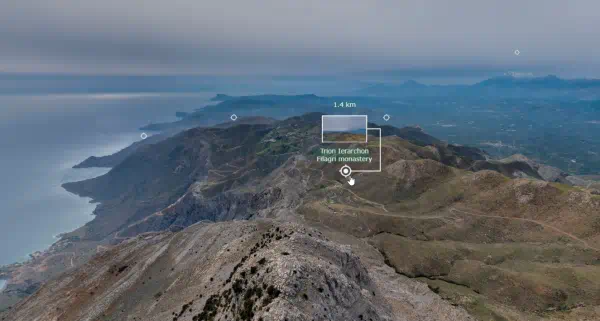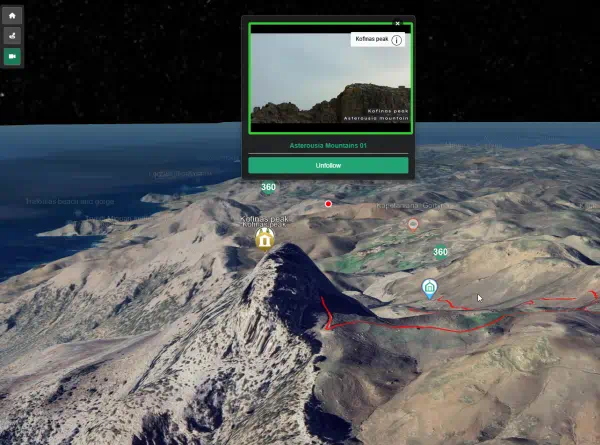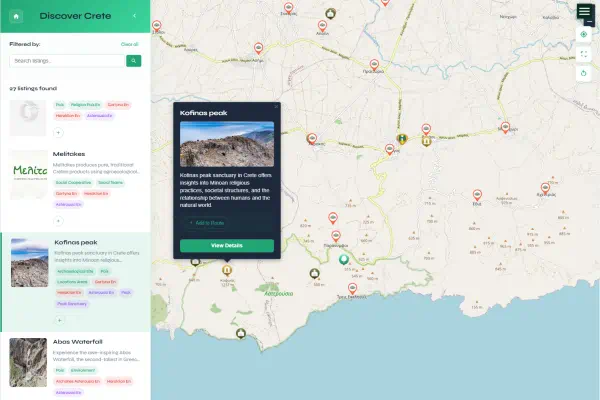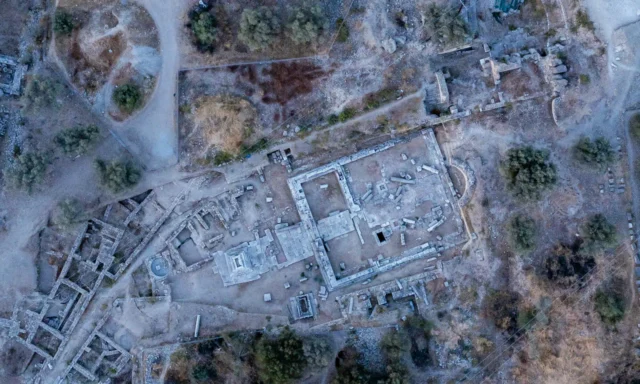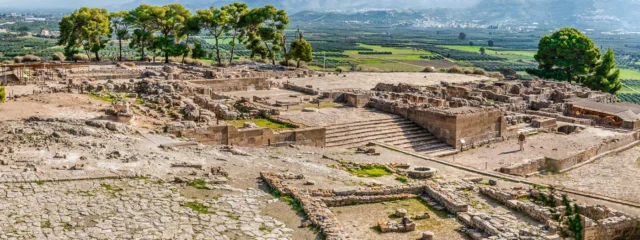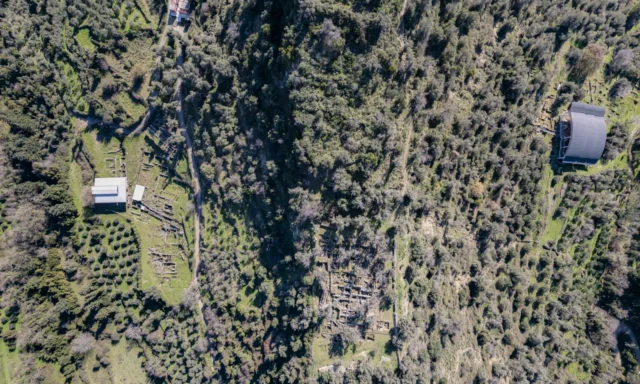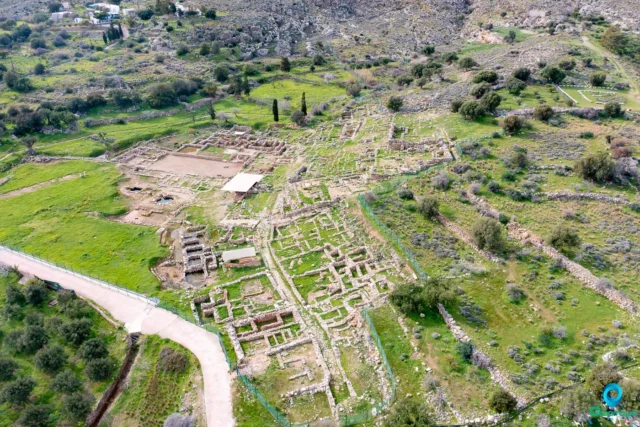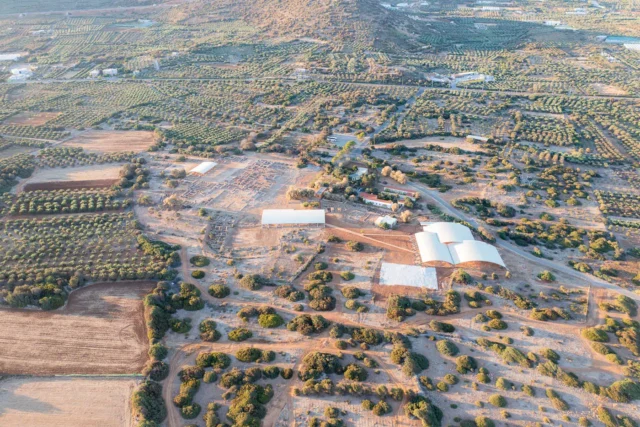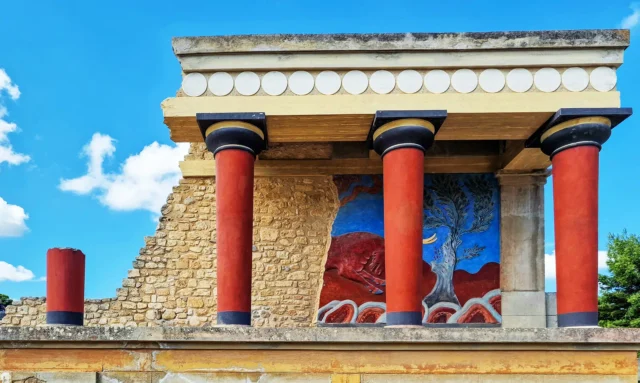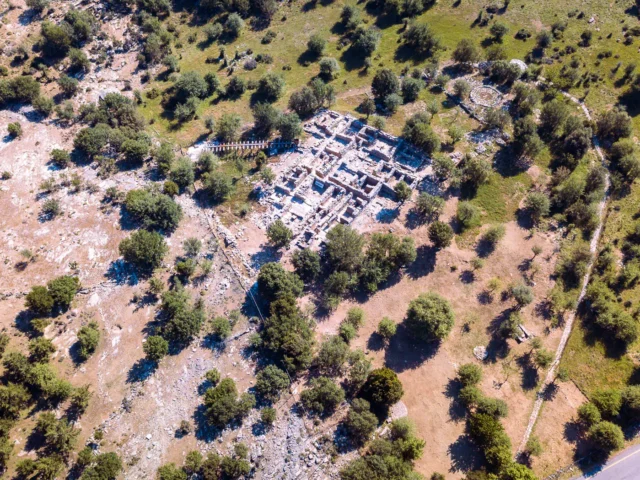The Minoan Palatial Centres of Crete were inscribed on the UNESCO World Heritage List on July 12, 2025, during the 47th session of the World Heritage Committee. This inscription provides international recognition for the Minoan civilization, which developed on Crete during the Bronze Age and is a foundation of European culture. The serial nomination includes six palatial centers: Knossos, Phaistos, Malia, Zakros, Zominthos, and Kydonia.
The inscription process faced challenges. An initial technical evaluation by the UNESCO Expert Council recommended a referral, indicating a need for improvements in the nomination file regarding integrated management, legal protections for Kydonia, and the authenticity of reconstructions at Knossos. However, the World Heritage Committee’s final unanimous decision to approve the inscription confirms the sites’ importance and reflects the successful diplomatic and technical efforts of the Hellenic Republic.
This report provides an overview of this event. It details the significance of the inscription and profiles the six palatial centers that now have World Heritage status. It examines the nomination process, including the initial challenges that were overcome. Furthermore, this report discusses other important Minoan sites not included in the nomination, such as the palaces at Galatas and Petras. Finally, it addresses the challenge presented by the recent discovery at Papoura Hill, which is a test of the commitment to heritage preservation that the UNESCO inscription requires. The recognition of the Minoan palaces prompts a wider and more careful management of all of Crete’s archaeological sites.
A Profile of the Six World Heritage Sites
The newly inscribed serial property of the “Minoan Palatial Centres” is a key example of Europe’s first advanced urban civilization. These were not just royal residences, but complex, multi-functional centers that functioned as the administrative, economic, religious, and social centers of a maritime society. Their unique architecture, which includes large central courts, multi-story wings, light-wells, and advanced sanitation systems, is an example of significant human creative achievement. The inscription of these six sites together recognizes them as an interconnected system that collectively shows the influence and resourcefulness of the Minoan civilization.
Minoan Palaces
Knossos: The Labyrinthine Heart
The Palace of Knossos was the center of the Minoan civilization, the largest and most complex of the palaces, covering some 20,000 square meters. Its complex layout is associated with the myth of the Labyrinth. With settlement dating to 7000 BCE, it is Europe’s oldest city and is of significant importance. Discoveries at the site include the Throne Room, the Grand Staircase, and the “Bull-Leaping Fresco”. The extensive reconstructions by Sir Arthur Evans in the early 20th century using reinforced concrete, while making the site visually impressive, led to a debate about its authenticity—a key issue that had to be addressed during the nomination process.
Phaistos: The Southern Citadel
Located with a view over the Mesara plain, the Palace of Phaistos is known for its architectural integration with the landscape. It is archaeologically important for its well-preserved remains from the Protopalatial (Old Palace) period, which are located beneath the later Neopalatial structure. Its most famous artifact is the Phaistos Disk. Its hieroglyphic script has not been deciphered and is an example of Minoan intellectual achievement.
Malia: The Coastal Powerhouse
Situated on the north coast, the Palace of Malia was a major center for maritime trade and industry. The site is notable for its large storage magazines, a unique altar in the central court, and the nearby necropolis of Chrysolakos, where the gold bee pendant, an example of fine Minoan jewelry, was discovered. The palace, its surrounding town, and the necropolis provide a comprehensive view of a Bronze Age coastal city.
Zakros: Gateway to the East
Located in a protected bay on Crete’s easternmost coast, Zakros was the Minoans’ primary commercial port for trade with Cyprus, the Levant, and Egypt. The palace was destroyed suddenly and was not looted, leaving its contents for archaeologists to find. This palace contained a large collection of ritual objects, including the bull’s head rhyton, and a significant archive of Linear A tablets that were preserved by the fire that destroyed the site.
Zominthos: The Mountain Stronghold
The discovery of Zominthos, at an altitude of nearly 1,200 meters on the slopes of Mt. Ida, changed the understanding of Minoans as only a coastal people. This is the only Minoan palatial building on a mountaintop that has been excavated. It is located on the route between Knossos and the Ideon Cave. Its well-preserved central building has over 100 rooms, frescoes, and specialized workshops. It indicates a complex, high-altitude administrative and religious center used to control the mountain’s resources.
Kydonia: The Buried Metropolis
Ancient Kydonia is located beneath the modern city of Chania, showing over 5,000 years of continuous habitation. Despite the difficulties of urban archaeology, salvage digs have found significant remains, including a pottery workshop and archives of Linear B clay tablets. The discovery of a Linear B archive is significant because it is the only one found in Crete outside of Knossos. This shows Kydonia was a major administrative center of similar importance during the Mycenaean era. The difficulty of protecting this urban site was a major factor in the UNESCO nomination.
Comparative Analysis of the Six Inscribed Minoan Palatial Centres
Site Name | Location (Regional Unit) | Key Chronology | Approx. Size (Palace) | Key Discoveries / Features | Outstanding Universal Value Contribution |
Knossos | Heraklion | Protopalatial, Neopalatial, Postpalatial (peak c. 1750-1430 BCE) | 20,000 m² | Throne Room, Labyrinthine plan, Bull-Leaping Fresco, Linear B archive, Evans’s reconstructions 22 | The primary center of Minoan civilization; site of immense mythological and cultural resonance. Represents the peak of palatial power and complexity. |
Phaistos | Heraklion | Protopalatial, Neopalatial (peak c. 1900-1450 BCE) | ~8,000 m² | Phaistos Disk, well-preserved Old Palace remains, spectacular landscape integration, Grand Staircase 24 | The second-greatest southern power; provides exceptional evidence for the Protopalatial period and unique artistic/intellectual achievements. |
Malia | Heraklion | Protopalatial, Neopalatial (peak c. 1900-1450 BCE) | 7,500 m² | Gold Bee Pendant, Kernos stone, extensive magazines, surrounding town and Chrysolakos necropolis | A major coastal trading and industrial center; showcases the relationship between a palace, its urban settlement, and its workshops/cemeteries. |
Zakros | Lasithi | Protopalatial, Neopalatial (peak c. 1600-1450 BCE) | ~8,000 m² | Unlooted treasury, Bull’s Head Rhyton, Linear A archive, imported Eastern goods (ivory, copper) | The strategic “Gateway to the East”; provides unparalleled evidence of Minoan international trade and pristine, unlooted ritual artifacts. |
Zominthos | Rethymno | Neopalatial (peak c. 1700-1600 BCE) | 1,600 m² (Central Building) | Unique high-altitude location, monumental Central Building, rock crystal workshop, strategic position on sacred route | Demonstrates Minoan control over mountain resources and diverse environments, challenging the purely maritime view of the civilization. |
Kydonia | Chania | Continuous habitation (peak c. 1700-1100 BCE) | N/A (buried under city) | Linear B archive (unique outside Knossos), distinctive pottery workshop, extensive urban remains | A major western administrative center buried under a modern city; highlights the challenges of urban archaeology and protection. |
The Path to Recognition
Achieving World Heritage status is a rigorous process to ensure only sites of “Outstanding Universal Value” (OUV) are listed. The process for the Minoan Palaces was a multi-year effort that started with their inclusion on Greece’s Tentative List in 2014, expanding an earlier nomination that focused only on Knossos.
After the submission of a detailed nomination file, the proposal was evaluated by the International Council on Monuments and Sites (ICOMOS), UNESCO’s advisory body for cultural sites. The initial ICOMOS evaluation recommended that the nomination be referred back to Greece. This was a request for clarification and improvement of the file on several technical points:
Integrated Management: The council requested a stronger, unified management plan with a common vision for all six sites, addressing modern threats such as climate change and tourism pressure.
Legal Protection for Kydonia: A major concern was that Kydonia, located under modern Chania, did not have the highest level of legal protection (“Zone A”) provided to the other sites and lacked a clearly defined protection zone.
Authenticity at Knossos: The evaluators requested clarification about the extensive reconstructions at Knossos by Sir Arthur Evans, which used modern materials like concrete. These changes made it difficult to distinguish original Minoan construction from early 20th-century additions.
Boundaries and Buffer Zones: A review of the buffer zones around the sites was recommended to better protect their landscape settings from visual and developmental impacts.
While this referral was a significant challenge, the Hellenic Republic successfully addressed these concerns, which led to the final, unanimous vote for inscription by the World Heritage Committee. This result indicates the Committee was convinced of the sites’ OUV and of Greece’s commitment to meeting the high standards of protection and management required by the World Heritage Convention.
Beyond the Inscribed Palaces: A Holistic View of Minoan Heritage
While the inclusion of the six main palatial centers is significant, these sites are the most prominent examples of a wider and more varied civilization. To understand the Minoan civilization, it is necessary to consider the network of other towns, villas, and sites that constituted their society.
Other important palatial centers, Galatas, Petras, and Monastiraki, highlight this diversity. The palace at Galatas, discovered in the 1990s, is unique because it was built and inhabited during a single period in the Neopalatial era, offering a clear, unadulterated view of its architecture without the complications of later rebuilding. It featured a massive hearth, the first of its kind found in Minoan Crete, suggesting large-scale ceremonial feasting. The palace at Petras, near modern Siteia, was a vital commercial hub in eastern Crete with its own hieroglyphic archive, indicating its role as a regional administrative center. The archaeological site of Monastiraki, situated strategically in the Amari Valley, offers a crucial window into the Protopalatial period. This major center, likely a satellite of Phaistos, was destroyed around 1700 BCE and not significantly rebuilt, leaving a well-preserved example of a Middle Minoan administrative complex. Excavations have revealed extensive storage areas, workshops, and multiple archives with numerous clay sealings, indicating its role as a hub for collecting and redistributing agricultural goods and its deep integration into the broader Minoan network of power and trade. The existence of these and other smaller palatial sites demonstrates a complex political landscape that was not solely controlled by Knossos.
In addition to the palaces, numerous other sites show different aspects of Minoan society. The Minoan villa at Agios Georgios sto Tourtouloi, for instance, with its 30 rooms and evidence of wine production, is an example of the agricultural estates that supported the palatial economy. The UNESCO designation should direct attention and resources toward the preservation and continued study of all interconnected Minoan sites, not only the six included in the inscription.
A Test of Commitment: The Papoura Hill Discovery
The celebration of the Minoan Palaces’ inscription is tempered by a pressing contemporary challenge that serves as a critical test of Greece’s commitment to its cultural heritage: the recent discovery on Papoura Hill. In June 2024, during construction work for a radar installation for the new Kasteli International Airport, archaeologists unearthed a monumental and unique circular structure dating to the Minoan period (c. 2000-1700 BCE).
This labyrinthine building, approximately 48 meters in diameter, consists of eight concentric stone rings surrounding a central building. Its purpose is not yet fully understood, but the discovery of large quantities of animal bones suggests it was not a residence but a communal building used for periodic rituals involving feasting and offerings. The find is unprecedented in Minoan archaeology and of immense importance.
The discovery has ignited a significant controversy. The structure sits on the precise location chosen for the airport’s radar system, creating a direct conflict between a major infrastructure project and the preservation of a unique monument. While initial statements from the Ministry of Culture hailed the find’s importance, subsequent suggestions that a modern radar could coexist near the ancient structure have drawn sharp criticism from archaeologists, who see it as a diminishment of the monument’s value and a prioritization of development over preservation.
This situation is a crucible for the principles of heritage protection. The long delay in achieving UNESCO status for the Minoan palaces has already raised questions about the consistency of this commitment. How Greece resolves the conflict at Papoura Hill will be a powerful indicator of whether the UNESCO inscription marks a true paradigm shift towards a more holistic and uncompromising protection of its cultural legacy. The world is now watching to see if the spirit of the World Heritage Convention will be applied with equal vigor to protect the next great discovery.

